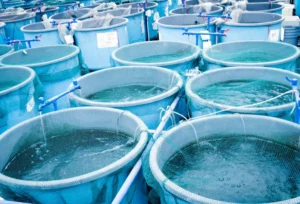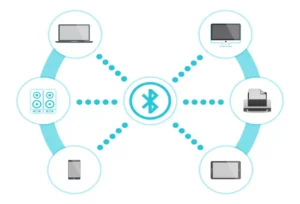A crisis is on us that has put humanity at stake. Issues like climate change, pollution, disappearing species, and damaged ecosystems could determine our future.
For us to sustain our survival, we’ve got to protect the natural world, reduce waste, and properly handle what waste we create. Maintaining a balanced ecosystem is important for safeguarding animals and their homes, plus dealing with the serious effects of climate shift.
To make sustainability real, we need to change our everyday behaviors, consume less, and reform the guidelines and structures that set the course in our communities. We’ve got to:
- Adjust daily habits
- Cut back on what we use
- Rethink the rules and systems shaping where we live
Taking those steps is key for balancing nature over the long haul. Our actions now will deeply impact not just the environment, but everything that depends on a healthy planet for generations to come.
Key Concepts
Protecting the natural environment and its ecosystems, including air, water, soil, biodiversity etc. This involves conservation of natural resources.
Ensuring that any use of natural resources is done responsibly and efficiently to allow renewal and regeneration. For example, preventing overfishing to allow fish populations to replenish.
Promoting use of renewable resources like solar, wind energy rather than finite resources like coal, oil etc. Renewable resources regenerate naturally.
Reducing pollution, greenhouse gas emissions and managing waste effectively through methods like recycling. This maintains balance of the ecosystems.
Designing human communities and activities to integrate harmoniously within the natural environment. For example, green buildings.
Importance of Ecological Sustainability
Preserving ecosystems and biodiversity which are being lost at an alarming rate currently due to human activities. It ensures a balance of natural systems that support all life.
Ensuring availability of resources like water, air, soil, forests etc. for long term human survival and preventing resource depletion or disasters.
Mitigating issues like climate change, global warming and reducing environmental pollution levels to prevent health hazards.
Promoting equitable access to natural resources across current and future generations to meet economic and social development needs.
Saving costs in the long run as renewable resources are cheaper than finite ones and preventing environmental damage is cheaper than undergoing restoration.
Key areas for implementing ecological sustainability
Energy efficiency and renewable energy
- Adopting energy-efficient technologies such as LED lighting, high-efficiency HVAC systems, insulation, etc. can lower energy usage
- Installing onsite renewable energy systems like solar panels or wind turbines reduces reliance on fossil fuels
- Purchasing renewable energy credits supports cleaner energy on the grid
Waste management and recycling
- Reducing waste generation through responsible consumption and production cuts down on landfill contributions
- Implementing office/home recycling and composting programs keeps materials in use and reduces pollution
- Supporting or investing in recycling infrastructure diverts waste from landfills
Sustainable transportation
- Promoting public transport usage, carpooling, biking and walking for daily commutes reduces carbon emissions.
- Transitioning vehicle/fleet operations to hybrid, electric or alternative fuel models cuts down on fossil fuel dependence.
Sustainable agriculture and food systems
- Supporting local food producers, farmers markets and urban agriculture boosts community resilience
- Choosing organic, seasonal and less resource-intensive food options minimizes environmental strain
- Reducing food waste by monitoring purchasing, storage and reuse habits improves efficiency
Forest conservation
- Preventing deforestation protects biodiversity-rich habitats and carbon storage capabilities
- Reforestation efforts via tree planting help reestablish forest resources
- Sourcing certified sustainable wood products reduces pressure on forests
Water conservation
- Installing water-efficient fixtures, rainwater harvesting systems and greywater reuse reduces strain on water resources
- Choosing drought-tolerant native plants for landscaping cuts down on irrigation needs
- Identifying and repairing leaks quickly minimizes water wastage
Benefits of ecological sustainability
Implementing ecologically sustainable practices comes with numerous benefits for the environment, economy, and society.
Environmental benefits
- Preserves natural resources for current and future generations
- Protects ecosystems and biodiversity
- Reduces pollution and waste
- Mitigates climate change by reducing greenhouse gas emissions
- Enhances resilience to environmental disasters and climate impacts
Economic benefits
- Boosts innovation and development of green technologies
- Reduces operating costs through energy and resource efficiency
- Opens up new market opportunities in the green economy
- Enhances productivity through healthier environments
- Increases food security through sustainable agriculture
- Saves costs of environmental cleanup and disasters
Social benefits
- Improves public health through reduced pollution and better environments
- Enhances quality of life with greener cities and communities
- Promotes social equity and poverty alleviation
- Creates green jobs and just transition for workers
- Strengthens cultural traditions and indigenous practices
- Allows equal access to clean air, water, food and shelter
- Upholds responsibility to future generations
The transition to an ecologically sustainable society delivers immense benefits across environmental, economic and social dimensions. Protecting the planet’s ecosystems and resources leads to sustainability and prosperity for all.
Best practices for implementing ecological sustainability
Government regulations and incentives
Governments can implement regulations, policies and incentives to promote sustainability at a large scale.
Examples include:
- Carbon pricing and emissions trading schemes – Put a price on carbon to incentivize emissions reductions
- Renewable energy targets – Set targets for renewable energy generation and use
- Energy efficiency standards – Implement minimum energy performance standards for buildings and appliances
- Subsidies and tax breaks for green technology adoption
- Ban harmful products and processes such as single-use plastics
- Implement extended producer responsibility laws
Corporate sustainability strategies
Businesses can adopt sustainability strategies such as:
- Energy, water and waste audits to identify savings opportunities
- Procure renewable energy to power operations and facilities
- Switch fleet vehicles to EV/hybrid models to reduce emissions
- Adopt a formal Environmental Management System
- Set science-based emissions reduction targets across the value chain
- Conduct life cycle assessments to understand product impacts
- Switch to eco-friendly packaging and responsible supply chains
Community outreach and engagement
Engage and educate individuals and community groups through:
- Community renewable energy projects and cooperatives
- Workshops on topics like home energy efficiency, gardening, recyling
- Encouraging sustainable transport options like public transport, cycling and walking
- Citizen science initiatives like waterway/wildlife monitoring
- Volunteering programs for ecological restoration projects
- Awareness campaigns on various environmental issues
The key is to have sustainability initiatives and partnerships at the government, corporate, and community levels. Each group has an important role to play in working towards ecological sustainability.
Closing Thoughts
A greener, sustainable tomorrow isn’t an easy path, but it’s a journey we need to take! Achieving eco-balance requires effort from:
- Governments
- Businesses
- Individuals
Rapid tech advances have brought us closer to the goal thanks to things like more solar power, wind power, and electric vehicles gaining steam. However major policy changes are still needed before sustainable options are widely adopted.
Governments must lead the push for clean tech and implement solid regulations. Companies also have a big role—they should be open about their environmental work and strive harder to be more earth-friendly in everything they do!





